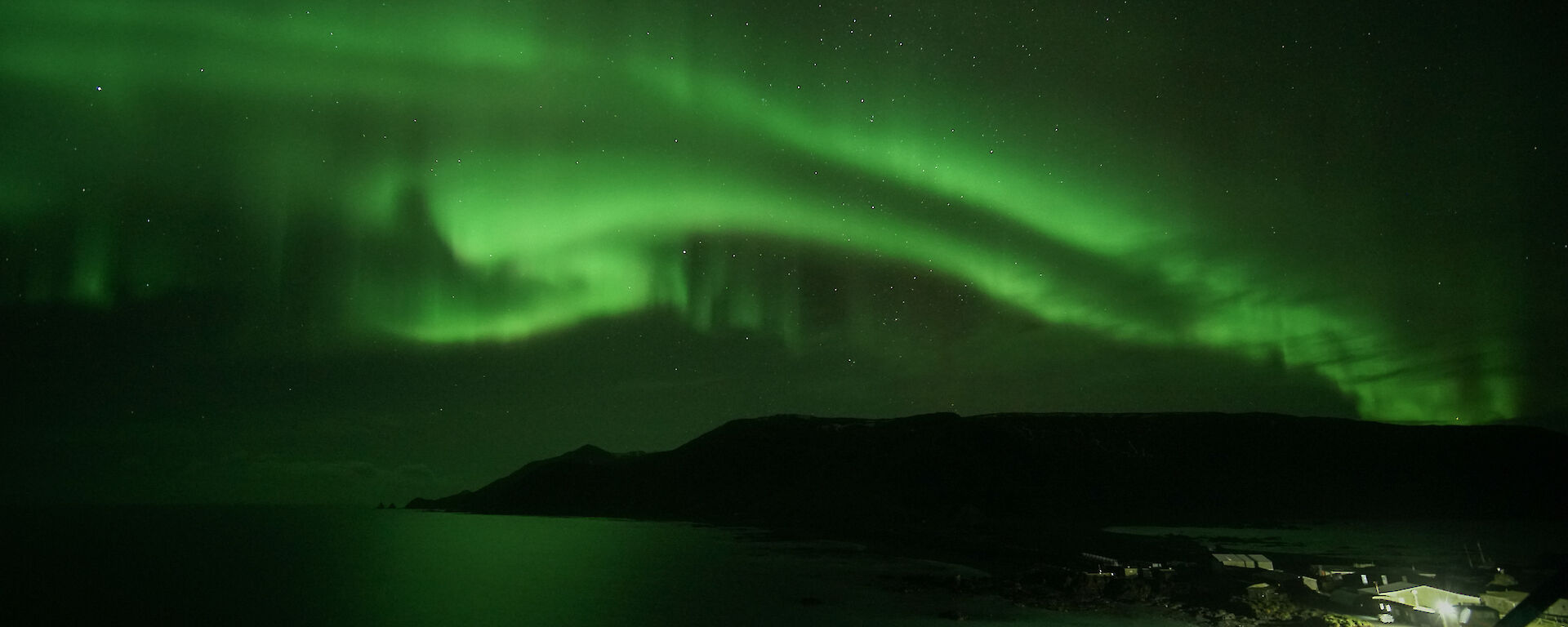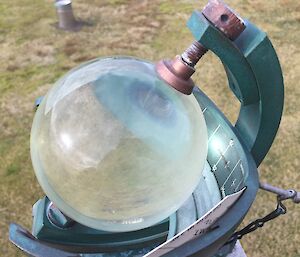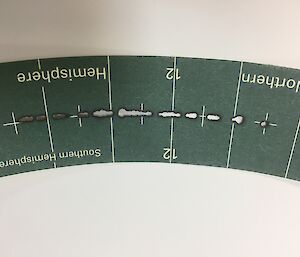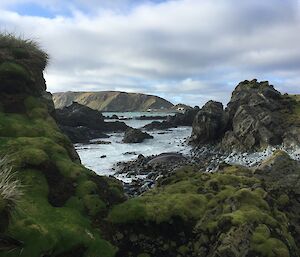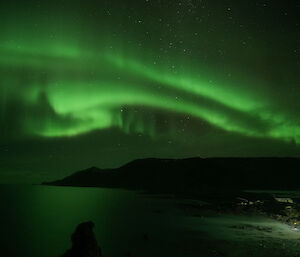Macquarie Island is known to be one of the cloudiest places on earth. In the World Meteorological Organisation’s Normals Database, spanning a 30 year period, Macquarie Island has previously appeared to be the second cloudiest place. This information relates to participating WMO stations over land that record sunshine hours. There are of course much cloudier places on the planet, however than what this particular data suggests because there is a lot of cloud that persists over ocean and this is measured differently by way of satellite.
Sunshine here on the island is measured by way of a Campbell-Stokes sunshine recorder. Named after the inventor and then the person that modified it, it concentrates sunlight through a glass sphere onto a recording card. When the sunlight is strong enough, the card burns and leaves a trace which in turn represents the sunshine duration of the day. The amount of cloud that covers the sky also gets reported in synoptic weather observations by way of oktas. 8 oktas is completely overcast and 1 okta represents one eighth of a cloud covered sky.
The mean average annual sunshine for Macquarie Island is a mere 864 hours. Compare that to somewhere like Alice Springs who reaps an average of 3509 of sunshine hours per year or Perth with over 3200 hours similarly.
On the shortest day of the year in June, Macca can receive 7 hours and 16 minutes of potential sunlight. Yet the monthly mean average for this shortest month is 0.6 hrs, which equates to 36 minutes of actual sunshine (8.25 per cent of the day length).
Comparatively on the longest day of the year in December, Macca can receive 17 hours and 15 minutes of potential sunlight. Despite that, the average mean actual daily sunshine for December is 3.5 hours, equating to 210 minutes out of the day. November, January and February receive more sunlight on average, being 3.7 hours daily (just over 20 per cent of the day length). Bring on the Summer!
Macquarie Island statistically has 3.5 clear days a year (that are free from fog, mist, cloud or haze). It has an average of 289 cloudy days a year (where cloud covers 65 to 100 per cent of the sky for majority of the day). With the cloud comes the rain and Macca receives precipitation on an average of 317 days of the year. One can imagine the appreciation of sunlight when it does beam down on us!
Despite that the fact that Macquarie Island is covered by cloud a lot, aurora activity is prominent in this region. When clouds clear in the winter night sky, we are privileged to witness spectacular auroras along with twinkling stars.
It is thanks to the sun that auroras exist. It all starts 150 million kilometres away where the sun works as a thermonuclear reactor, turning hydrogen atoms into helium atoms, producing million-degree temperatures and powerful magnetic fields. In some places, strong magnetic fields push their way to the sun’s surface, then eject outwards into space carrying hot gases and charged particles, also known as plasma. Also recognised as solar wind, or sometimes as a coronal mass ejection (CME), these charged particles (electrons and protons) travel towards earth at an incredible speed of up to 1584000km/h or 440km/second.
Our magnetosphere shields us from most of the sun’s particles by deflecting them but some travel along earth’s magnetic field lines and are funnelled into the earth’s atmosphere at the poles, where the magnetosphere is weaker. When this happens, the electrons in the solar wind collide with oxygen and nitrogen atoms in the earth’s atmosphere. These collisions, usually take place between 60 to 300km above ground, cause the oxygen and nitrogen to become excited. When this happens, energy is released in the form of particles of light, known as photons. This glow is known as the aurora.

